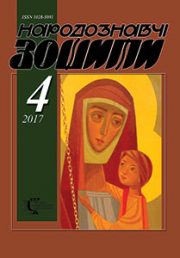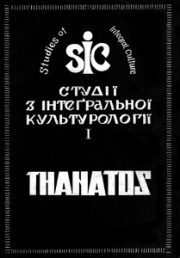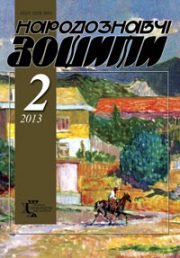The Ethnology Notebooks. 2021. # 1 (157), P. 53—64
УДК 94(477.83-25)”18″-055.26-058.34
DOI https://doi.org/10.15407/nz2021.01.053
Ivanna CHERCHOVYCH
- ORCID ID: https://orcid.org/0000-0003-3078-7003
- PhD in History, Research Fellow,
- Department of Social Anthropology,
- Institute of Ethnology, National Academy of Sciences of Ukraine,
- 15, Svobody Avenue, 79000, Lviv, Ukraine
- e-mail: ivankacherchovych@gmail.com
TO LIVE AT THE MARGINS: POOR AND PREGNANT IN LEMBERG IN THE LATE 19th CENTURY
This article is dedicated to one of the most unexplored group of that time Lemberg’ citizens – working women, their private lives and motherhood experiences. Despite of the fact that they represented the majority of female urban population, their stories are still untold. Partly because of the silence of sources with their direct speeches, partly because of the need to select information about them from the testimonies of others – correspondence of their employers, press and literature of that time. The relevance and purpose of this paper is driven by the lacunas in this area and the lack of its analysis, hence by the desire to contribute to it. Labour migration from countryside to the city obviously affected matrimonial market, making women more economically independent, but also (which was not surprising) uncovering their vulnerability. Single motherhood was becoming more and more visible experience of working women’ private life in that time city.
The sources of this research are above mentioned testimonies of others (private correspondence of employers and press) as well as the criminal cases about infanticide, child abandonment and abortion, which were considered by Lemberg Regional Court in 1865—1905. The stories of these cases were covering in fact small autobiographies of accused women, since the investigative interest had required very detailed self-narrations from defendants. These stories are especially interesting in regards to industrialization, urbanization and emancipation as a key processes of that time society, which enlarged dramatically percentage of women on the labour market and their mobility.
In this research I use a combination of two methods, content analysis and critical discourse analysis. The first makes information from the sources systematically comparable, the second one helps me to explore the links between language use and social practices. These stories fall into genre of the microstudy — the history of individuals, small communities, exclusiveness or randomness, examples of which shed light on the one of the most «silent» experiences of everyday live in late 19th century in Lemberg.
My key research conclusions are based on the thesis of special connection between women’ poverty and sexuality at that time society. To be poor for women meant to live under much more severe social pressure and ongoing risk to be compromised regardless of real facts or just assumptions.
Keywords: women, illegitimate children, motherhood, criminal cases, late 19th century, Lemberg.
REFERENCES
- Urbanik-Kopeć A. Instrukcja nadużycia. Służące w XIX-wiecznych polskich domach. Katowice: Sonia Draga, 2019. 304 s.
- Wingfield N. M. World of Prostitution in Late Imperial Austria. Oxford: Oxford University Press, 2017. 288 p.
- Kis, O. (2012). Women’s history as a direction of historical research: the formation of feminist methodology. Ukrainian Historical Journal, 2, 159—172 [in Ukrainian].
- TsDIAL (Central State Historical Archive of Ukraine in Lviv). F. 152. Оp. 2. Od. save 19376. Arc. 1—48 [in Polish].
- Walkowitz, J. R. (1992). City of Dreadful Delight. Narratives of Sexual Danger in Late-Victorian London. Chicago: The University of Chicago Press.
- Piddubniak, O. (Ed.). (2018). Antin and Mariya Krushelnytski. True confession of life. Correspondence. Bila Tserkva [in Ukrainian].
- Piotrowska-Marchewa, M. (2006). «You have three enemies, who are going to steal your soul…». Moral threats in Polish handbooks and press for domestic service at the turn of 20th centuries. Woman and revolution of tradition. Social and cultural aspects of sexuality, 9, 247—263 [in Polish].
- Illouz, E. (2019). The End of Love: A Sociology of Negative Relations. Oxford: Oxford University Press.
- Dnistrianskyi, S. (Ed.). (1919). Civil law (Part 1). Wien [in Ukrainian].
- Vasyl Stefanyk National Scientific Library of Ukraine in Lviv. Manuscripts department. F. 41. Od. save 55/3. Arc. 1—81 [in Ukrainian].
- K-s’ka. The issue of women’s equality, Zhinoche dilo, Lemberg, 1912 [in Ukrainian].
- Kattner, Fr. (Ed.). (1894). Lemberg in numbers. Lemberg: Publishing house of «Dziennik Polski» [in Polish].
- (1898) Chronicle. Survey on Christian Female Workers, Dziennik Polski, Nr 116, 118, 122, 125, 131, 132, 140) [in Polish].
- TsDIAL (Central State Historical Archive of Ukraine in Lviv). F. 152. Оp. 2. Od. save 18680. Arc. 1—19 [in Polish].
- Anna, P. (1887). Working woman. Pershyi vinok. Women’ almanac, 361—365 [in Ukrainian].
- Pawlowich J. Priest Z. Gorazdowski – creator of the first institution for single mothers. Retrieved from: http://www.pawlowicz.opoka.org/gor_matki.htm (Last accessed: 21.10.2020) [in Polish].
- TsDIAL (Central State Historical Archive of Ukraine in Lviv). F. 152. Оp. 2. Od. save 21624. Arc. 1—34 [in Polish].
- Stauter-Halsted, K. (2015). The Devils Chain: Prostitution and Social Control in Partitioned Poland. Ithaca: Cornell University Press.
- Sikorska-Kulesha, J. (2004). Tolerated evils. Prostitution in the Kingdom of Poland in the 19th century. Warsaw: Mada [in Polish].
- Wingfield, N.M. (2017). The World of Prostitution in Late Imperial Austria. Oxford: Oxford University Press.
- TsDIAL (Central State Historical Archive of Ukraine in Lviv). F. 146. Оp. 59. Od. save 57. Arc. 1—4 [in Polish].
- Huchtker, D. (2002). «Obscenity of women» and «baseness of Jews»: poverty in the descriptions of Berlin and Galicia in 19th century. Gender stories of Eastern Europe, 228—245 [in Russian].
- Gondek, M. (2013). The Austrian criminal procedure in 1853 and 1873 based on the practice of the jurisprudence of Cracow courts. Studies on the history of the state and the Polish law, 16, 245–267 [in Polish].
- TsDIAL (Central State Historical Archive of Ukraine in Lviv). F. 152. Оp. 2. Od. save 16041. Arc. 1—10 [in Polish].
- TsDIAL (Central State Historical Archive of Ukraine in Lviv). F. 152. Оp. 2. Od. save 16946. Arc. 1—20 [in Polish].
- Heijden, M.P.C. van der. (2016). Women and Crime, 1750—2000. Oxford Handbook of the History of Crime and Criminal Justice. Oxford: Oxford University Press, 250—267. DOI:10.1093/oxfordhb/9780199352333.013.10
- Karpinski, A. (1996). Criminality in Lemberg at the end of the 16th and 17th centuries. Historical Review, 87, 4, 753—768 [in Polish].
- Illouz, E. (2012). Why Love Hurts. A Sociological Explanation. Cambridge: Polity Press.
- Kowalsky, S.A. (2009). Deviant women: Female crime and criminology in revolutionary Russia, 1880—1930. DeKalb: Northern Illinois University Press.






